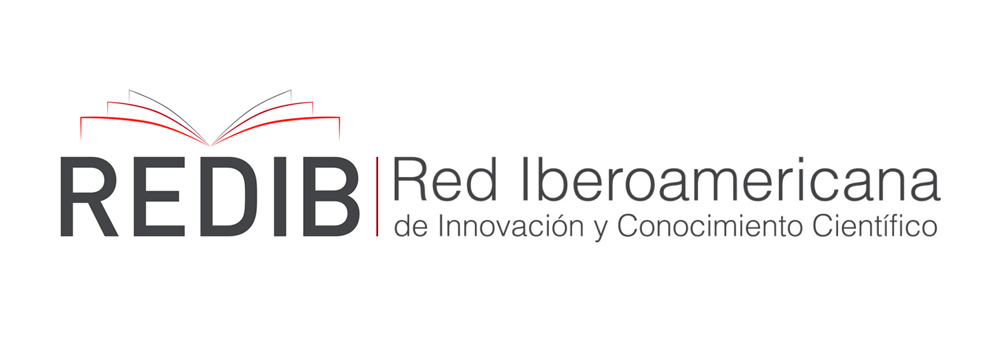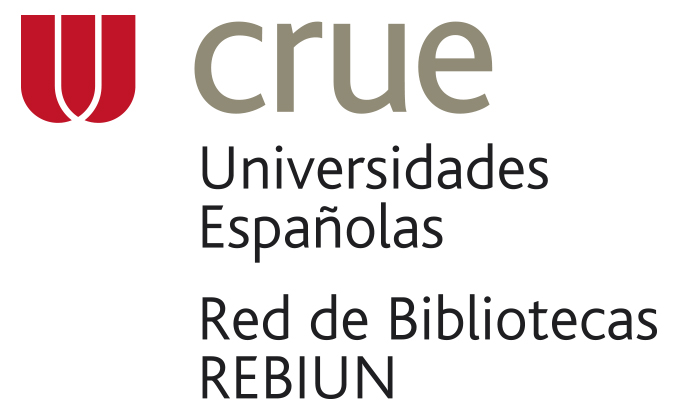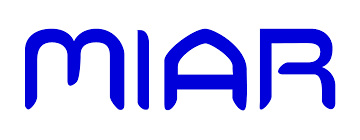Creative thinking: a holistic study in education
DOI:
https://doi.org/10.35622/j.rie.2021.04.009Keywords:
dimensions, strategies, creative thinking, theoriesAbstract
The objective was to review various scientific articles to identify the relevant concepts, characteristics, and theories that underpin the construction of creative thinking and analyze the proposals that contribute to its improvement. For this, databases such as Ebsco, Scopus, Eric were reviewed, from which 50 relevant articles were selected. The methodology used is descriptive-analytical, which allowed us to reach the following results: there are a diversity of definitions, characteristics, and strategies that promote the improvement of creative thinking, and its development in students is crucial for good growth in society. In conclusion, the educational system must promote the knowledge and development of creative thinking in the teaching-learning process since this skill is required to access a job.
References
Akpur, U. (2020). Critical, Reflective, Creative Thinking and Their Reflections on Academic Achievement. Thinking Skills and Creativity, 37(1), 100683. https://doi.org/10.1016/j.tsc.2020.100683
Álvarez, E. (2010). Creatividad y pensamiento divergente. Desafío de la mente o desafío del ambiente. En InterAC. shorturl.at/bmACR
Bart, W., Hokanson, B., & Can, I. (2017). An investigation of the factor structure of the Torrance tests of creative thinking. Educational Sciences: Theory and practice, 17(2), 515-528. https://doi.org/10.12738/estp.2017.2.0051
Bezanilla, M., Poblete, M., Fernández, D., Arranz, S., & Campo, L. (2018). El Pensamiento crítico desde la perspectiva de los docentes universitarios. En Estudios pedagógicos (Vol. 44, Número 1, pp. 89-113). https://doi.org/10.4067/s0718-07052018000100089
Blas, A., Broncano, G., Carlos, C., Durand, J., Huaman, Z., & Torres, D. (2018). Guilford, su estructura del intelecto y la creatividad. https://www.ecotec.edu.ec/material/material_2020B1_HUM151_05_140504.pdf
Blázquez, A. (2009). La importancia de ser creativo. https://dkh.deusto.es/comunidad/deustoentrepreneurship/recurso/creatividad-y-educacion-la-importancia-de-ser/fefa8cb6-01ce-4fb4-baa0-d601ae3efcc3
Caldwell, H., Whewell, E., & Heaton, R. (2020). The impact of visual posts on creative thinking and knowledge building in an online community of educators. Thinking Skills and Creativity, 36. https://doi.org/10.1016/j.tsc.2020.100647
Campos, A., & González, M. (1994). Imagen, inteligencia y creatividad. Psicothema, 6(3), 387-393. https://www.redalyc.org/articulo.oa?id=72706306
Chacón, Y. (2011). Una revisión crítica del concepto de creatividad. Actualidades Investigativas en Educación, 5(1), 1-30. https://doi.org/10.15517/aie.v5i1.9120
Escribano, A., & Del Valle, Á. (2008). El aprendizaje basado en problemas (ABP) una propuesta metodológica en Educación Superior. Narcea Ediciones. https://dialnet.unirioja.es/servlet/libro?codigo=345238
García, A., Jenaro, C., & Castaño, R. (2015). Creatividad en alumnos de primaria: evaluación e intervención [Universidad de Salamanca]. En Universidad de Salamanca. https://doi.org/10.14201/gredos.129409
Groyecka, A., Gajda, A., Jankowska, D., Sorokowski, P., & Karwowski, K. (2020). On the benefits of thinking creatively: Why does creativity training strengthen intercultural sensitivity among children. Thinking Skills and Creativity, 37. https://doi.org/10.1016/j.tsc.2020.100693
Gube, M., & Lajoie, S. (2020). Adaptive expertise and creative thinking: a synthetic review and implications for practice. Thinking Skills and Creativity, 35. https://doi.org/10.1016/j.tsc.2020.100630
Laske, K., & Schröder, M. (2017). Quantity, qualiy and originality: the effects of incentives on creativity. VfS Annual Conference 2017 (Vienna): Alternative Structures for Money and Banking. https://ideas.repec.org/p/zbw/vfsc17/168151.html
Lázaro, V. (2016). Fundamentos de una propuesta educativa de filosofía para niños, y la episteme y rol de las docentes de educación inicial – UNT. Revista Virtual “Perspectivas En La Primera Infancia”, 4(4), 1-26. https://revistas.unitru.edu.pe/index.php/PET/article/view/1286
Lestari, T., & Sumarti, S. (2018). STEM-based project based learning model to increase science process and creative thinking skills of 5th grade. Journal of Primary Education, 7(1), 18-24. https://doi.org/10.15294/jpe.v7i1.21382
Lian, B., Kristiawan, M., & Fitriya, R. (2018). Giving creativity room to students through the friendly school’s program. International Journal of Scientific and Technology Research, 7(7), 1-7. https://doi.org/10.31219/osf.io/zebpd
Mallart, A., & Deulofeu, J. (2017). Estudio de indicadores de creatividad matemática en la resolución de problemas. En Revista Latinoamericana de Investigacion en Matematica Educativa (Vol. 20, Número 2). https://doi.org/10.12802/relime.17.2023
Medina Rodriguez, J. J., & Rodriguez Peralta, M. I. (2017). La fenomenología del pensamiento creativo en Matthew Lipman. Revista Electronica De Investigacion Docencia Y Creatividad-Docrea, 6, 105-117. https://isabelrodriguezclavesparaeducar.files.wordpress.com/2018/07/la-fenomenologc3ada-del-pensamiento-creativo-definitivo.pdf
Moura, T., Fleith, D., & Almeida, L. (2021). Desarrollo del pensamiento creativo en el ámbito educativo. Anuario de filosofía, psicología y sociología, 17(7), 117-130. https://doi.org/10.17151/rlee.2021.17.1.9
Muñoz, W. (2010). Estrategias de estimulación del pensamiento creativo de los estudiantes en el área de educación para el trabajo en la III etapa de educación básica. Congreso iberoamericano de educación.
Nugroho, A., Nizaruddin, N., Dwijayanti, I., & Tristianti, A. (2020). Exploring students’ creative thinking in the use of representations in solving mathematical problems based on cognitive style. JRAMathEdu (Journal of Research and Advances in Mathematics Education), 5(2), 202-217. https://doi.org/10.23917/jramathedu.v5i2.9983
Paniego, C. (2017). Aprender a pensar a través de la filosofía para niños. Forum Aragón: revista digital de FEAE-Aragón sobre organización y gestión educativa, 22, 18-22. https://dialnet.unirioja.es/servlet/articulo?codigo=6345078
Paramás, T., & Escurra, M. (2018). El pensamiento creativo y el rendimiento escolar en niños de segundo grado de primaria de una institución educativa privada del Distrito de la Molina, Lima, Perú. Paideia XXI, 8(|), 2519-5700. https://doi.org/10.31381/paideia.v8i1.2036
Parra, E., Segura, A., & Romero, M. (2020). Analysis of creative thinking and levels of student activation after a gamification experience. Educar, 56(2), 475-489. https://doi.org/10.5565 / rev / educar.1104
Ramírez, C. (2014). El aprendizaje basado en problemas : estrategia didáctica que fortalece el pensamiento creativo. Papeles, 6(11), 61-71. http://revistas.uan.edu.co/index.php/papeles/article/view/232
Redifer, J., Bae, C., & DeBusk, M. (2019). Implicit theories, working memory, and cognitive load: impacts on creative thinking. SAGE Open, 9(1). https://doi.org/10.1177/2158244019835919
Rodríguez, G. (2016). La reconfiguración perceptual de imágenes aplicada al desarrollo del pensamiento divergente en el aula de clase. Revista Q, 11(21), 61-81. https://doi.org/10.18566/revistaq.v11n21.a05
Saad, A., & Rowais, A. (2019). Effectiveness of Marzano ’ s dimensions of learning model in the development of creative thinking skills among Saudi foundation year students. World Journal of Education, 9(4), 49-64. https://doi.org/10.5430/wje.v9n4p49
Sánchez, L. (2015). La teoría de las inteligencias múltiples en la educación. En Universidad Mexicana. https://unimex.edu.mx/Investigacion/DocInvestigacion/La_teoria_de_las_inteligencias_multiples_en_la_educacion.pdf
Şenel, M., & Bağçeci, B. (2019). Development of creative thinking skills of students through journal writing. International Journal of Progressive Education, 15(5), 216-237. https://doi.org/10.29329/ijpe.2019.212.15
Srikongchan, W., Kaewkuekool, S., & Mejaleurn, S. (2021). Backward instructional design based learning activities to developing students’ creative thinking with lateral thinking technique. International Journal of Instruction, 14(2), 233-252. https://doi.org/10.29333/iji.2021.14214a
Sternberg, R. (1988). The nature of creativity Contemporary psychological perspectives. En Acta Psychologica. Cambridge University Press. https://doi.org/10.1016/0001-6918(90)90069-r
Sumarni, W., & Kadarwati, S. (2020). Ethno-stem project-based learning: Its impact to critical and creative thinking skills. Jurnal Pendidikan IPA Indonesia, 9(1), 11-21. https://doi.org/10.15294/jpii.v9i1.21754
Ulger, K. (2018). The effect of problem-based learning on the creative thinking and critical thinking disposition of students in visual arts education. Interdisciplinary Journal of Problem-based Learning, 12(1), 3-6. https://doi.org/10.7771/1541-5015.1649
Yildiz, C., & Guler, T. (2021). Exploring the relationship between creative thinking and scientific process skills of preschool children. Thinking Skills and Creativity, 39(2), 100795. https://doi.org/10.1016/j.tsc.2021.100795
Zhuang, K., Yang, W., Li, Y., Zhang, J., Chen, Q., Meng, J., Wei, D., Sun, J., He, L., Mao, Y., Wang, X., Vatansever, D., & Qiu, J. (2021). Connectome-based evidence for creative thinking as an emergent property of ordinary cognitive operations. NeuroImage, 227, 117632. https://doi.org/10.1016/j.neuroimage.2020.117632
Published
Issue
Section
License
Copyright (c) 2021 Maribel Carranza

This work is licensed under a Creative Commons Attribution 4.0 International License.



























